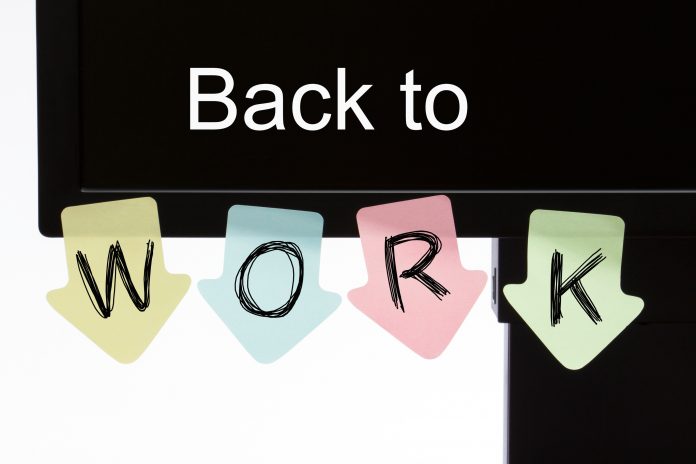Paul Sleath, CEO at PEO Worldwide, explores what the best approach is when handling the re-onboarding process of furloughed staff
Since lockdown was announced in March and the pandemic began to cripple the global economy, UK businesses across many different industries have taken advantage of the Government’s furlough scheme to drastically cut costs and prevent making mass redundancies.
But with the arrangement (also known as the ‘Coronavirus Job Retention Scheme’) due to end on the 31st of October, many companies are now looking to bring back their furloughed workers.
Decide who to bring back
There’s no prescribed way to bring employees back to work, but it’s advisable to give reasonable written notice of at least 48 hours. Remember, some staff members may not be able to use their usual childcare solutions so will have to arrange this.
Realistically, many companies who shut down entirely also won’t be at full operations as soon as they reopen. In these circumstances, you’ll have some difficult decisions to make about who to bring back first.
During this process, you should set out clear criteria for recalling staff. Will the decision be based merely on business need, or will you consider individual circumstances? It’s important to be fair and inclusive when making your decision and to document your reasons (such as seniority or operational needs) to mitigate the risk of potential discrimination claims.
Bringing some staff back to work part-time may also be a more suitable option for your business and workers — especially if employees are struggling to arrange childcare. As of July, part-time work was allowed as part of the furlough scheme, meaning workers will receive their usual salary on the days they do work and 80% of this amount on non-working days.
Make them feel welcome
Start with an offer letter which states all the information they need to know. The employee needs to know what’s changed (if anything) when it comes to their position, salary and benefits. For example, have wages been reduced across the board? How does being on furlough affect their sick leave or annual holiday entitlement? You should also provide details about how you will be ensuring workplace safety and staff wellbeing.
As an employer, you also need to understand that transitioning back to work after an extended period can come as a shock (particularly under these circumstances), so it’s essential to allow a degree of flexibility.
Create a supportive and caring environment
Employees should feel they are returning to a supportive and caring environment. However, it’s also vital to recognise that the pandemic may have had an unequal impact on your workforce. Some people will have been furloughed (potentially with full pay) while others might have had increased workloads to make up for staff shortages. These discrepancies could result in some negative feelings creeping into employee relations, so it’s important to nip any potential conflict in the bud.
As an employer, you should look for opportunities to reintegrate employees into the team. For example, you could organise weekly informal team catchups, team-building exercises over a video call or virtual quiz nights. You should also encourage all managers to have one-to-one meetings with every employee upon their return (even if it’s done digitally).
Get them back up to speed
While on furlough, employees may have missed out on crucial training, so it’s important to get them back up to speed. Make sure you provide them with the tools and time they need to complete their training (this may have to be done online if they’re still working from home).
If remote working isn’t possible in your industry, it’s your responsibility as the employer to create a safe work environment and promote social distancing. Re-onboarding should also include efforts to educate staff in the various guidelines available.
Provide support and reassurance
This is a time of high anxiety, which has been hard on everyone’s mental wellbeing. Add to that the stress and uncertainty of being placed on furlough, and there’s a chance your returning workers will have some extremely complicated feelings. So, it’s essential to be aware of this and do what you can to reassure and support them.
You should offer frequent and transparent communication about the state of the business and recovery plans, as well as an open-door policy so that employees can reach out privately with any questions or concerns. Knowing they are valued and supported by you will be pivotal to their wellbeing.











